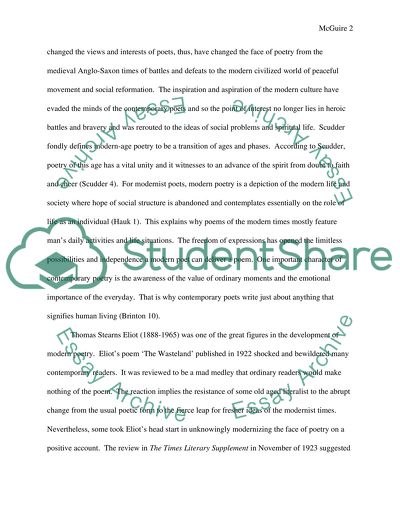Cite this document
(“Modern Poetry through The Love Song of J. Alfred Prufrock Research Paper”, n.d.)
Retrieved from https://studentshare.org/literature/1454667-the-love-song-of-j-alfred-prufrock-by-ts-eliot
Retrieved from https://studentshare.org/literature/1454667-the-love-song-of-j-alfred-prufrock-by-ts-eliot
(Modern Poetry through The Love Song of J. Alfred Prufrock Research Paper)
https://studentshare.org/literature/1454667-the-love-song-of-j-alfred-prufrock-by-ts-eliot.
https://studentshare.org/literature/1454667-the-love-song-of-j-alfred-prufrock-by-ts-eliot.
“Modern Poetry through The Love Song of J. Alfred Prufrock Research Paper”, n.d. https://studentshare.org/literature/1454667-the-love-song-of-j-alfred-prufrock-by-ts-eliot.


